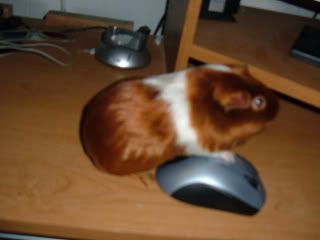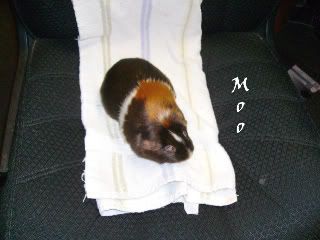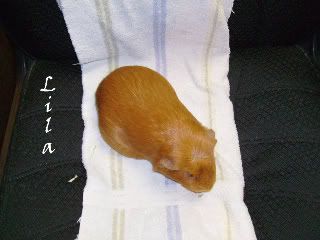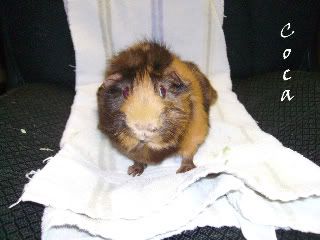
On to the topic at hand: Guinea Pigs
Often overlooked, Guinea Pigs are very neat little animals. That’s why I’m writing up a Care Profile of them for you! First a little bit about their origins. Their scientific name is Cavia Porcellus, thus many people often call them Cavies as well. Originally they come from South America, and today they are still considered a food item there and other parts of the world. Here in the good ole US of A, most of us consider them pets.
Diet: Adult Guinea Pigs, like all pets (and us humans too!) Need a varied diet to stay healthy and live to their full potential. They should have a daily staple of Guinea Pig pellets, which from what I understand, are a formulation of hay and other natural ingredients that have many of the vitamins and good stuff they require in their diet. You should also give them a nice pile of Timothy hay to graze on at their leisure. You can supplement their diet with leafy greens and give them fruit or vegetables sparingly. Always make sure they have access to fresh water, the most reliable delivery method being a standard gravity water bottle.
Companionship: Purchasing a lone Guinea Pig is ill advised. They are very social creatures and should have at least one same sex partner. Try to avoid mixing sexes unless you have them neutered. We all know that babies mean more babies and so on. If you get your pigs from different sources, quarantine them in different rooms for a few weeks to make sure nobody gets anybody sick. Having a friend will not stop your pigs from loving you as long as you handle them both everyday and make an effort on your part. Remember, Rome wasn’t built in a day and neither are friendships.
Housing: Do not use those so called “Guinea Pig” cages from the pet store. They are much to small for a single Guinea Pig, let alone two. Most Guinea Pig owners use “Cube and Coroplast” (or C&C) cages. Coroplast is a sign makers plastic, and you can get it a sign stores. Cubes are coated wire cubes that are intended for storage. You can buy them most anywhere you find household storage items. I’ll include a link to a full website dedicated to these cages at the end of this post. Whatever you choose to use for your cage, it should be at least 7 or 8 square feet per pair or single pig. Bigger is always better.
Bedding: Guinea Pigs are sensitive to dust (as with most small pets) and it can cause serious respiratory problems, so only use a bedding that is free of dust. Carefresh and Aspen shavings are often reccomended. Another method I recently learned about is much cheaper and cleaner. It involves lining the cage with a few towels (to absorb urine) and place a layer of fleece on top of that. You just do a daily spot cleaning to get rid of the poop and toss the bedding into the washing machine once a week to get rid of the urine. The best part is that the bedding is reusable and a one time cost.
Breeds: There are quite a few Guinea Pig breeds recognized by the American Cavy Breeders Association (ACBA). American is the most common breed and if you see you GP in the pet store, that’s probably what it is. Many of the other breeds have a continually growing long coat. If you want to keep their fur long, you’ll have to brush it daily and bathe them every so often. If you don’t want to deal with this, then carefully trim their fur to the desired length. Have someone experienced do it if you’re not sure how.

Links: Most of the information presented I learned from google searches and my friend
http://www.guinealynx.info/index.html (General Care Information)
http://www.cavyspirit.com/ (General Care Information)
http://www.guineapigcages.com (Lots of information about building C&C Cages!)
http://www.peteducation.com/article.cfm?c=18+1800&aid=2838 (Information about Guinea Pig Breeds)
More Pictures:


 [Thanks Azu for letting me use pictures of your girls!]
[Thanks Azu for letting me use pictures of your girls!]Well, I hope you enjoyed the first ever Vanilla Bean Care Profile! It’s been fun writing and researching this entry, but boy am I glad it’s done. I hope anyone looking to buy/adopt a guinea pig has gleaned useful information from it. Until next time, Wheek Wheek!
